The world of fungi is full of strange and colorful species that captivate the imagination with their unique forms and vibrant hues. From bright reds and blues to bioluminescent glows, these fungi are not only visually stunning but also play essential roles in their ecosystems. This article explores the top 16 strange and colorful fungus species, each with its distinct characteristics and fascinating appearances. Whether you’re a seasoned mycologist or a nature enthusiast, these remarkable fungi offer a glimpse into the incredible diversity and beauty of the fungal kingdom.
Rhodotus palmatus (Wrinkled Peach)
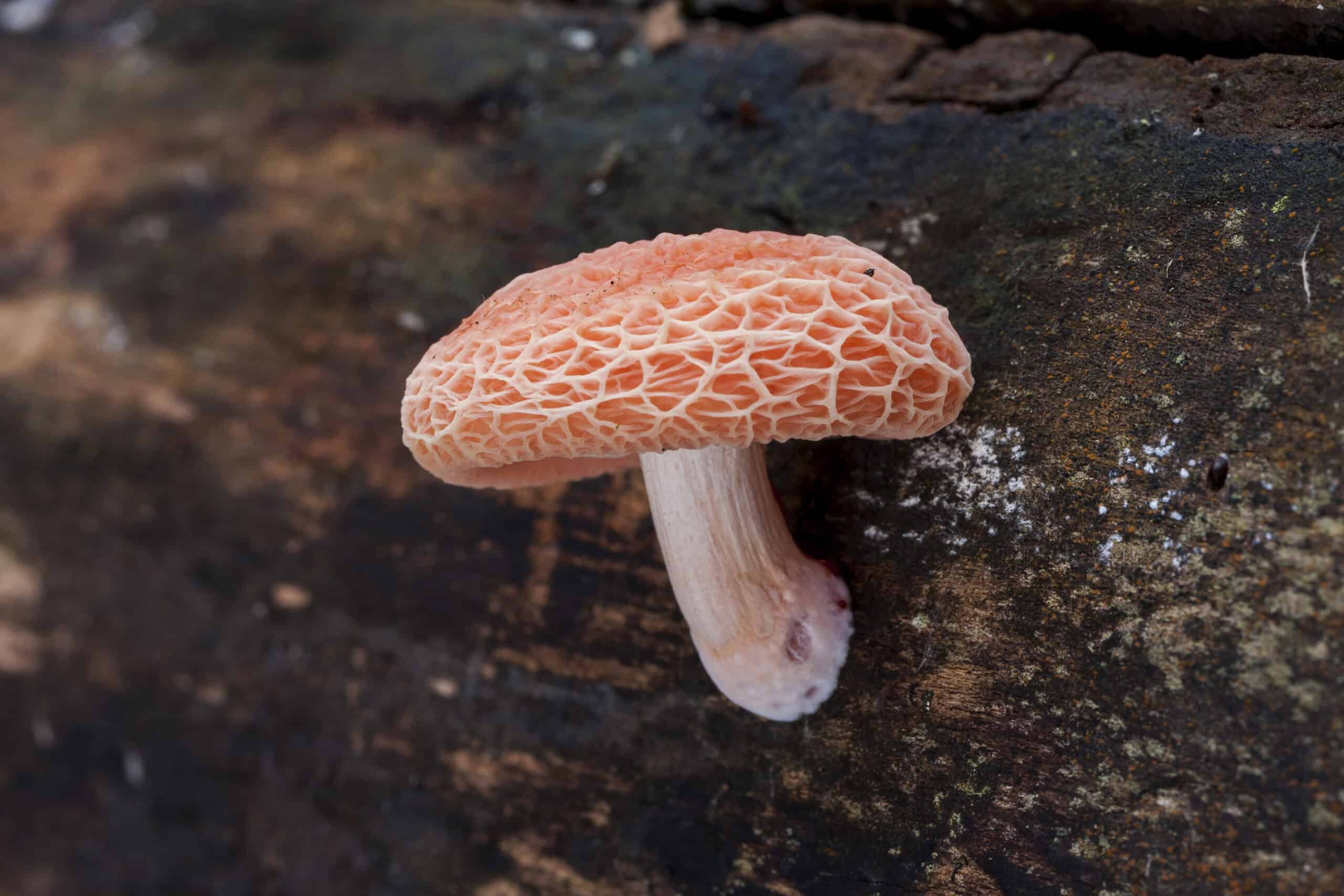
Rhodotus palmatus, commonly known as the Wrinkled Peach, is a striking fungus renowned for its unusual appearance and vibrant color. The cap of this mushroom is a delicate pink to salmon hue, often featuring a distinctive wrinkled or veined texture that gives it a peach-like look. This rare fungus typically grows on decaying hardwood and is most commonly found in temperate regions of Europe and North America. Its peculiar surface texture and uncommon coloration make Rhodotus palmatus a fascinating subject for mycologists and nature enthusiasts alike.
Sarcoscypha coccinea (Scarlet Elf Cup)
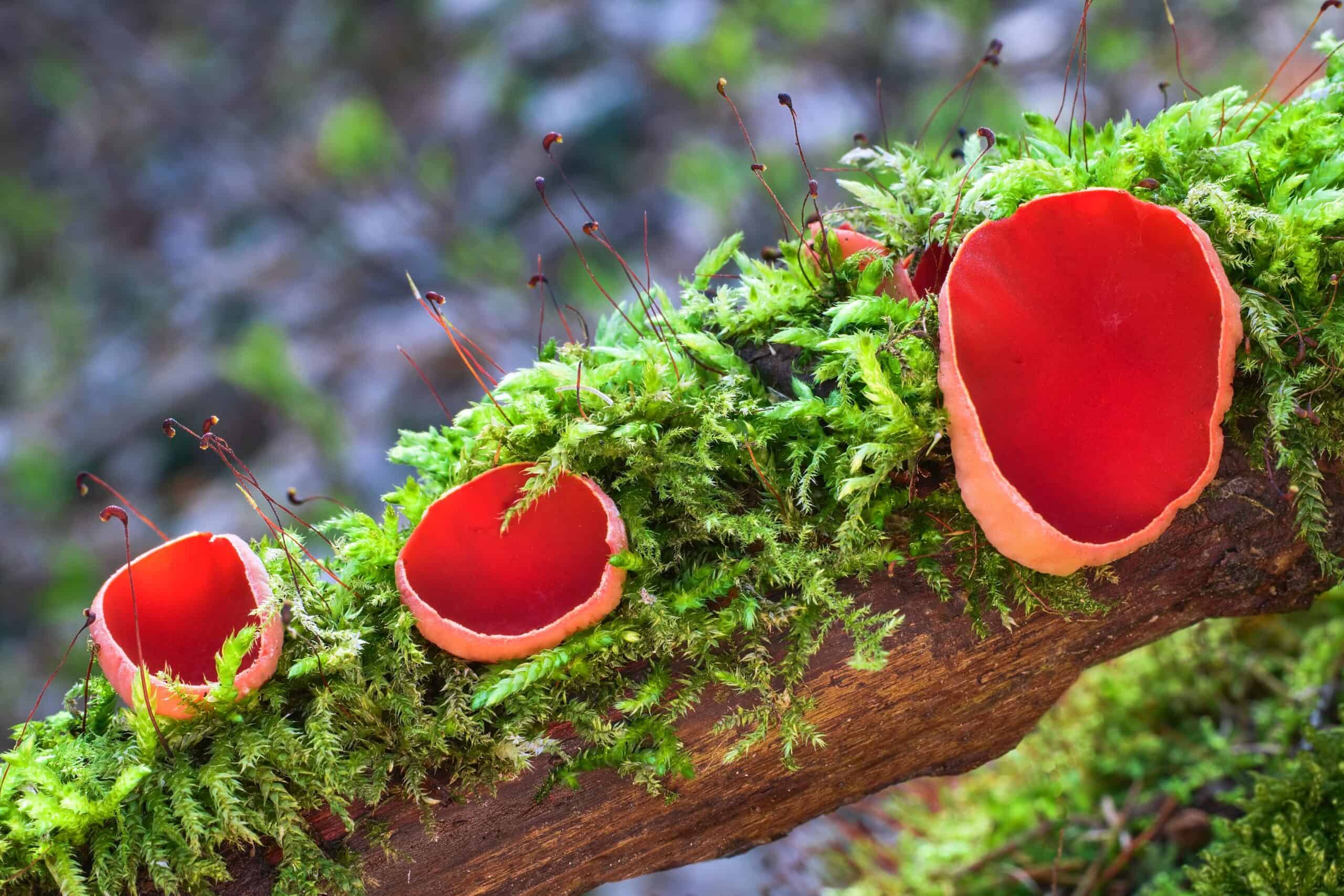
Sarcoscypha coccinea, known as the Scarlet Elf Cup, is celebrated for its vivid red cup-shaped fruiting bodies that stand out brightly against the forest floor. This fungus typically grows on decaying wood in damp, shaded environments, often emerging in late winter to early spring. The striking red color of the cups, contrasted with the pale exterior, makes this fungus particularly eye-catching. Its bright and cheerful appearance has made it a favorite among photographers and mushroom hunters, who often encounter it in temperate forests across the Northern Hemisphere.
Amanita muscaria (Fly Agaric)
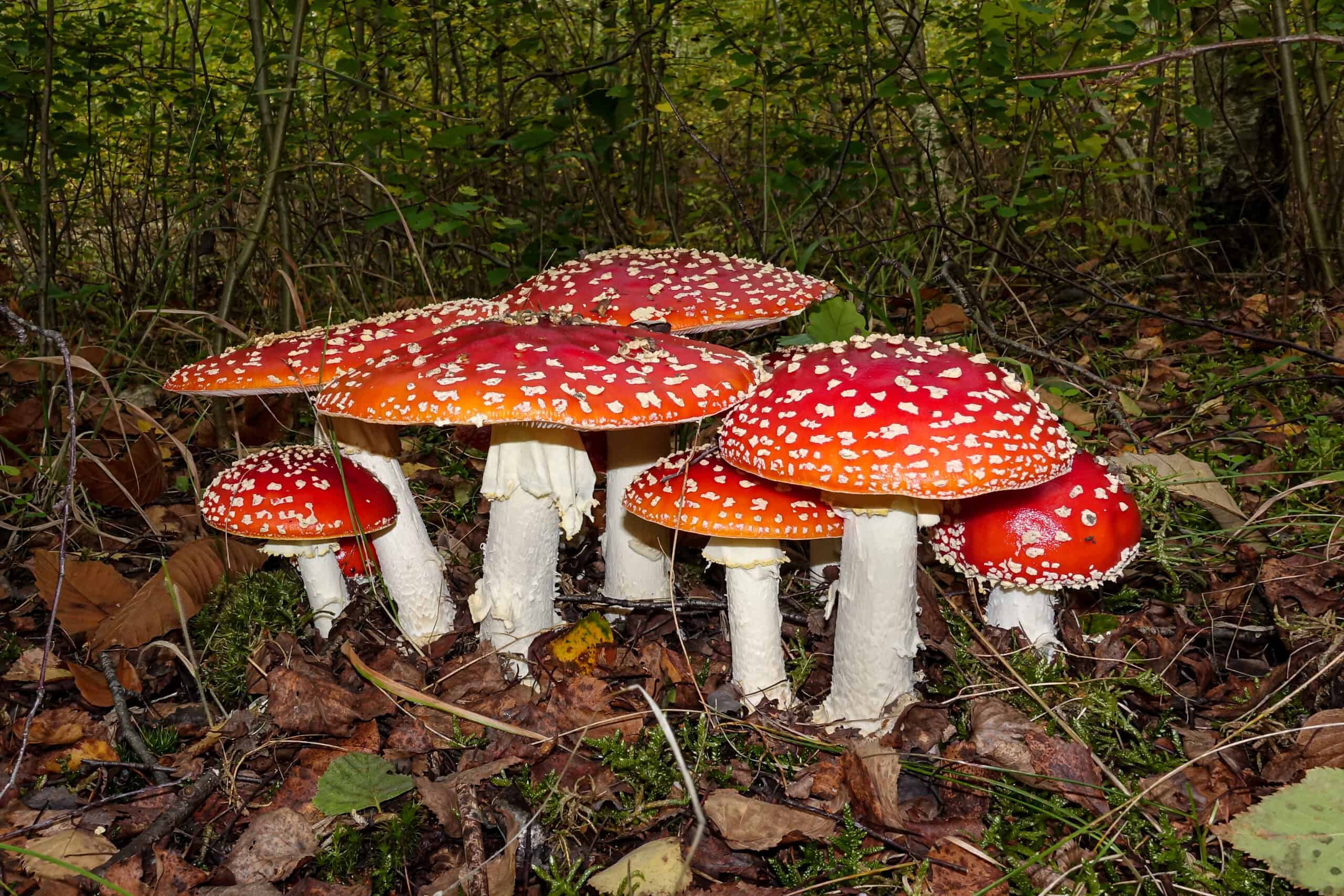
Amanita muscaria, or Fly Agaric, is one of the most iconic and recognizable mushrooms in the world. Its bright red cap adorned with white spots has become a symbol of the quintessential toadstool in folklore and fairy tales. Despite its beauty, this mushroom is toxic and contains psychoactive compounds, including muscimol and ibotenic acid. Found in symbiotic association with trees such as birch and pine, Amanita muscaria is widespread across temperate and boreal regions of the Northern Hemisphere. Its hallucinogenic properties and striking appearance have fascinated humans for centuries, contributing to its legendary status.
Laccaria amethystina (Amethyst Deceiver)
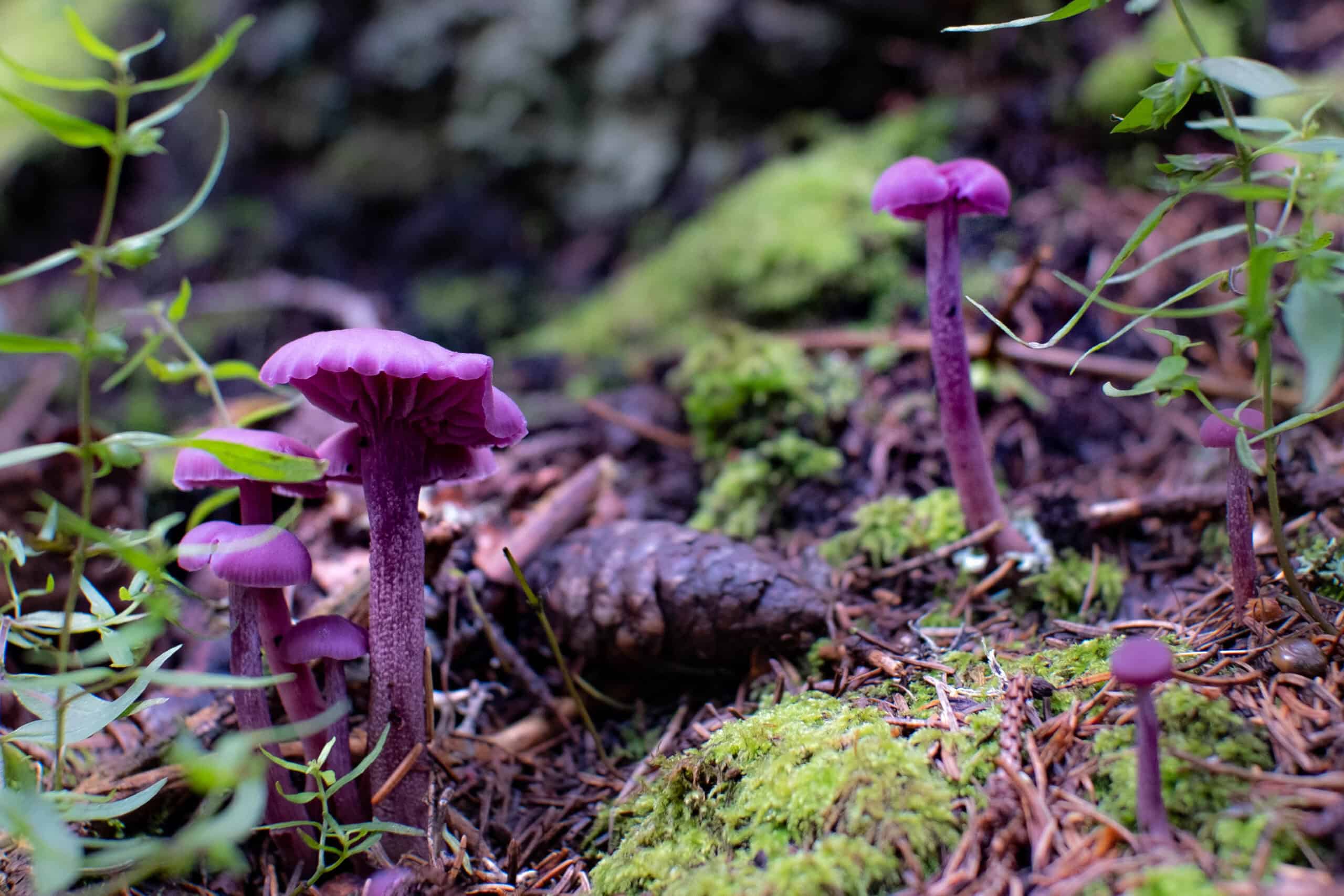
Laccaria amethystina, commonly known as the Amethyst Deceiver, is a small but striking fungus with a beautiful purple coloration. The cap and stem of this mushroom exhibit a rich amethyst hue, which can fade to a more subdued lilac or brown as it ages. Growing in both deciduous and coniferous forests, this fungus forms a symbiotic relationship with tree roots, aiding in nutrient absorption. The vibrant color and diminutive size of the Amethyst Deceiver make it a delightful find for foragers and mycologists, despite its tendency to lose its coloration over time.
Hydnellum peckii (Bleeding Tooth Fungus)

Hydnellum peckii, known as the Bleeding Tooth Fungus, is one of the most visually bizarre fungi in the natural world. The young fruiting bodies exude bright red droplets of fluid that resemble blood, creating a striking and somewhat eerie appearance. This unusual characteristic, combined with its white to pinkish cap covered in small spines, makes it easily recognizable. Found in North American and European coniferous forests, this mycorrhizal fungus forms beneficial relationships with trees. While it is not edible, its unique appearance has earned it a place in various lists of strange and fascinating fungi.
Clavaria zollingeri (Violet Coral)

Clavaria zollingeri, commonly referred to as Violet Coral, is a captivating fungus that resembles an undersea coral. Its intricate branching structure and vivid violet color make it stand out among forest floor litter. This fungus typically grows in woodland habitats, often emerging in late summer to autumn. While it is not widely known, its unusual coral-like form and striking color have made it a subject of interest for both amateur and professional mycologists. The delicate and intricate appearance of Violet Coral adds a touch of the exotic to temperate forest ecosystems.
Entoloma hochstetteri (Werewere-kokako)
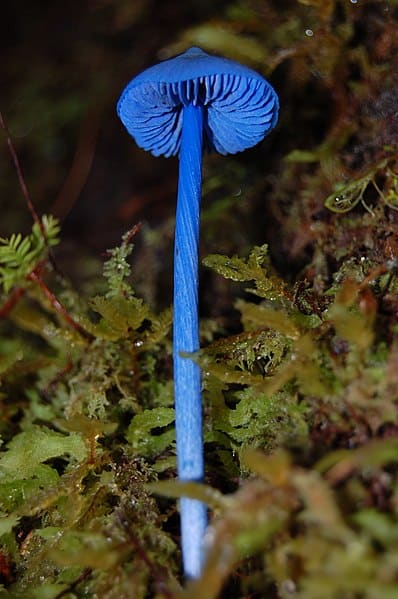
Entoloma hochstetteri, known as Werewere-kokako in New Zealand, is a stunning blue mushroom that looks almost otherworldly. The entire mushroom, including the gills and stem, exhibits a striking blue color, which is quite rare in fungi. Native to New Zealand, this fungus grows in leaf litter in forests and is named after the blue wattled crow, the kokako. The vibrant blue color, coupled with its rarity and specific habitat, makes Entoloma hochstetteri a fascinating and sought-after species for those studying fungal biodiversity.
Aseroe rubra (Anemone Stinkhorn)

Aseroe rubra, or the Anemone Stinkhorn, is a bizarre and colorful fungus found primarily in Australia. Its fruiting body resembles a red sea anemone, with several finger-like arms extending from a central disk. These arms are covered in a foul-smelling, sticky spore mass that attracts insects, which help disperse the spores. The striking appearance and strong odor of the Anemone Stinkhorn make it a memorable find for those exploring forested and mulched garden areas. Its unique reproductive strategy and vivid coloration highlight the incredible diversity of fungal forms.
Clathrus ruber (Latticed Stinkhorn)
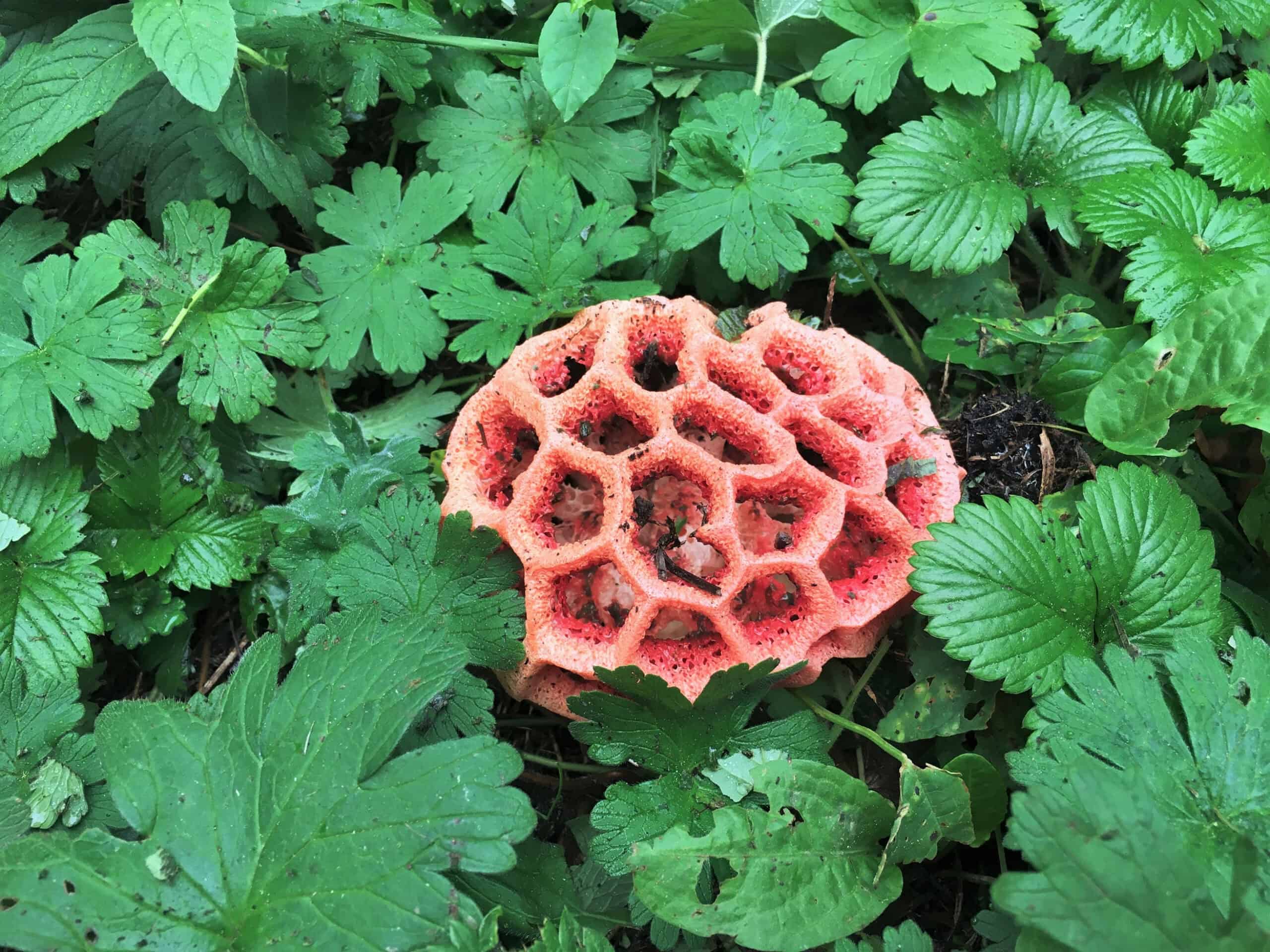
Clathrus ruber, known as the Latticed Stinkhorn, is a visually fascinating fungus with a bright red, lattice-like structure. This fungus emerges from an egg-like structure, gradually expanding into a hollow, spherical lattice that is both delicate and striking. Found in mulched gardens and forested areas in Europe, Asia, and North America, the Latticed Stinkhorn emits a strong odor to attract insects that aid in spore dispersal. Its intricate design and bright color make it a remarkable species, often surprising those who encounter it.
Clavulinopsis sulcata (Orange Coral)

Clavulinopsis sulcata, commonly known as Orange Coral, is a brightly colored fungus that resembles coral found in the ocean. The fruiting bodies are bright orange, branching, and can reach several inches in height. Typically found in grassy areas and open woodlands, this fungus adds a splash of color to its surroundings. Its striking appearance and coral-like form make it a fascinating subject for mycologists and nature enthusiasts, highlighting the diverse morphologies fungi can exhibit.
Panellus stipticus (Bioluminescent Panellus)
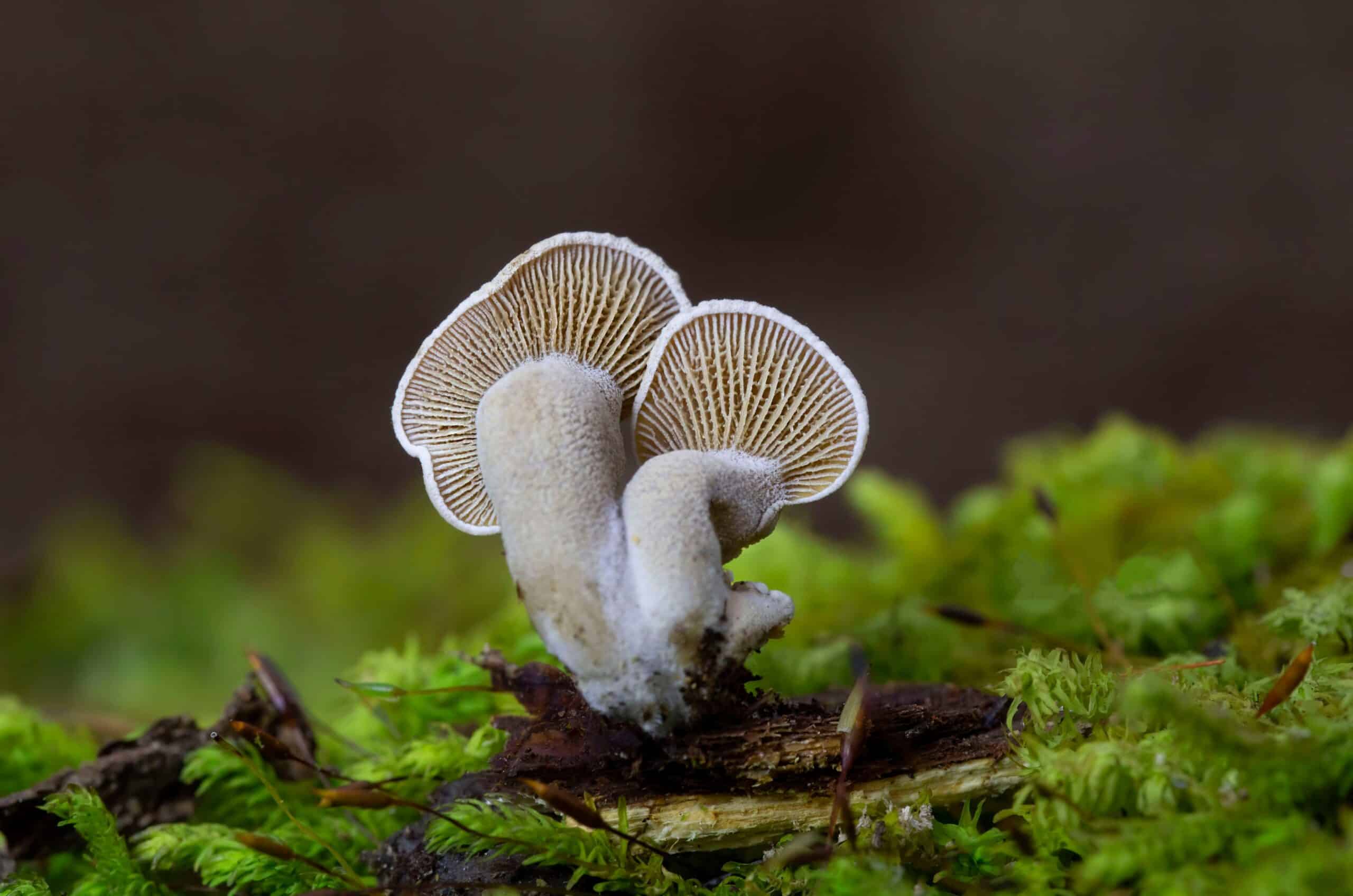
Panellus stipticus, known as the Bioluminescent Panellus, is famous for its ability to emit a soft greenish light in the dark. This bioluminescence is caused by a chemical reaction within the fungus and can be observed in damp, decaying wood in forests across North America and parts of Europe and Asia. The small, fan-shaped caps of this fungus are brown to orange-brown in daylight. The eerie glow of Panellus stipticus at night makes it a captivating species, drawing interest from both scientists and fungi enthusiasts.
Clathrus archeri (Devil’s Fingers)
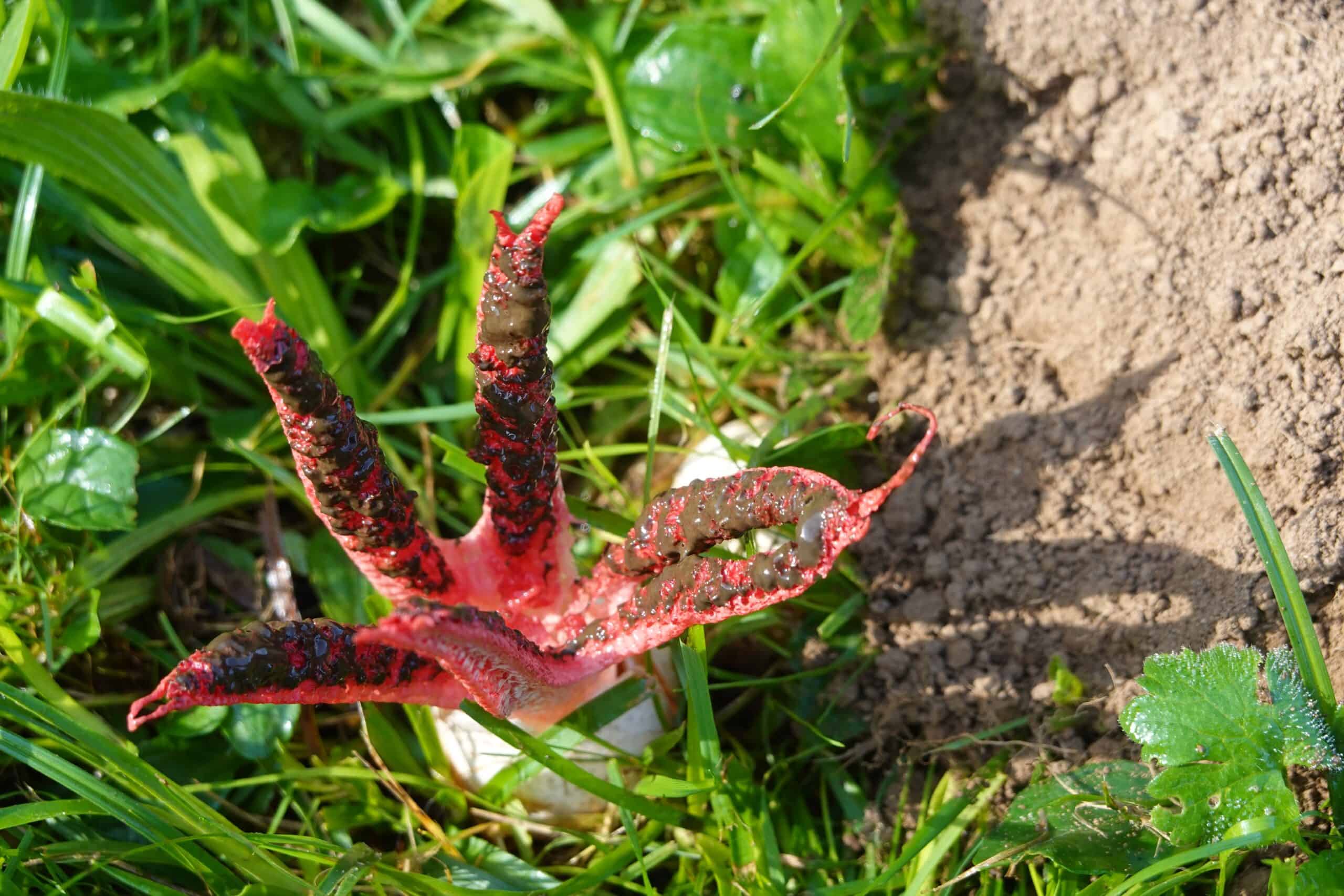
Clathrus archeri, commonly called Devil’s Fingers, is an unusual and striking fungus native to Australia and New Zealand. The fruiting body emerges from an egg-like structure and unfolds into several bright red, tentacle-like arms covered in a foul-smelling spore mass. This unique appearance resembles a hand or tentacles, making it one of the more bizarre fungi. The odor attracts insects that aid in spore dispersal. Its alien-like look and distinctive reproductive strategy make Devil’s Fingers a fascinating species to study and observe.
Mycena chlorophos (Bioluminescent Mushroom)
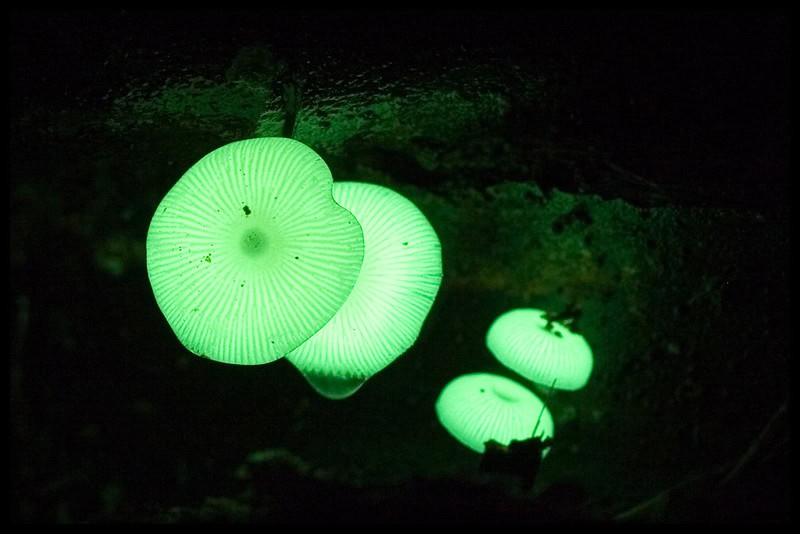
Mycena chlorophos is a small, bioluminescent mushroom found in tropical and subtropical regions, including Japan, Brazil, and Australia. These mushrooms emit a soft green glow, visible in dark, humid environments. The bioluminescence is due to a chemical reaction involving luciferin and luciferase. Typically growing on decaying wood, Mycena chlorophos is a delicate mushroom with a translucent cap and stem. Its enchanting glow and delicate structure make it a species of great interest to both researchers and nature enthusiasts.
1Favolaschia calocera (Orange Pore Fungus)
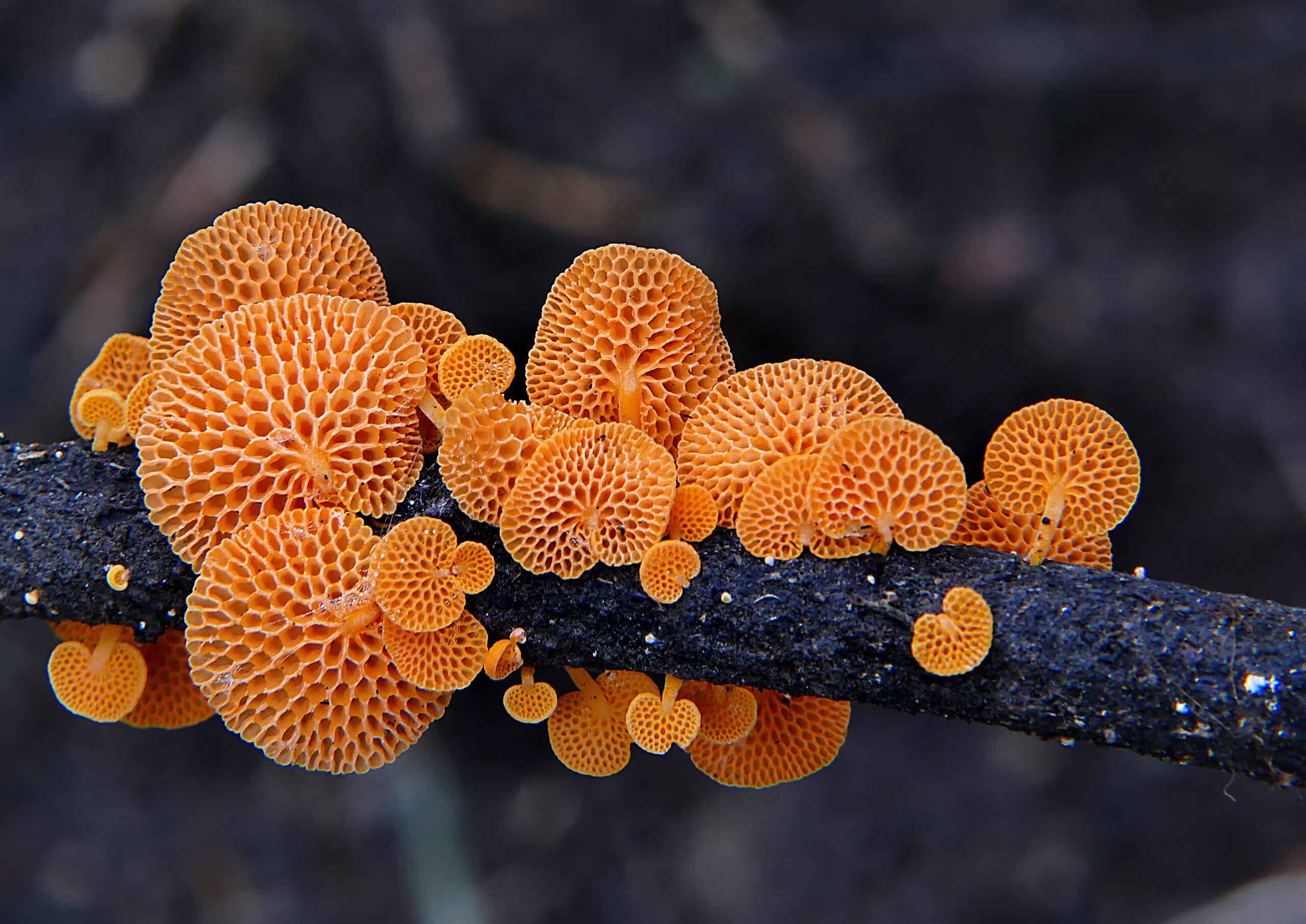
Favolaschia calocera, commonly known as the Orange Pore Fungus, is notable for its vibrant orange color and distinct pore surface. Found in tropical and subtropical regions, this fungus grows on decaying wood and has a fan-shaped fruiting body. The bright color and unique texture of the pore surface make it easily identifiable. Its striking appearance and relatively widespread distribution have made it a popular subject for study and photography in mycological circles.
Lycoperdon pyriforme (Pear-Shaped Puffball)
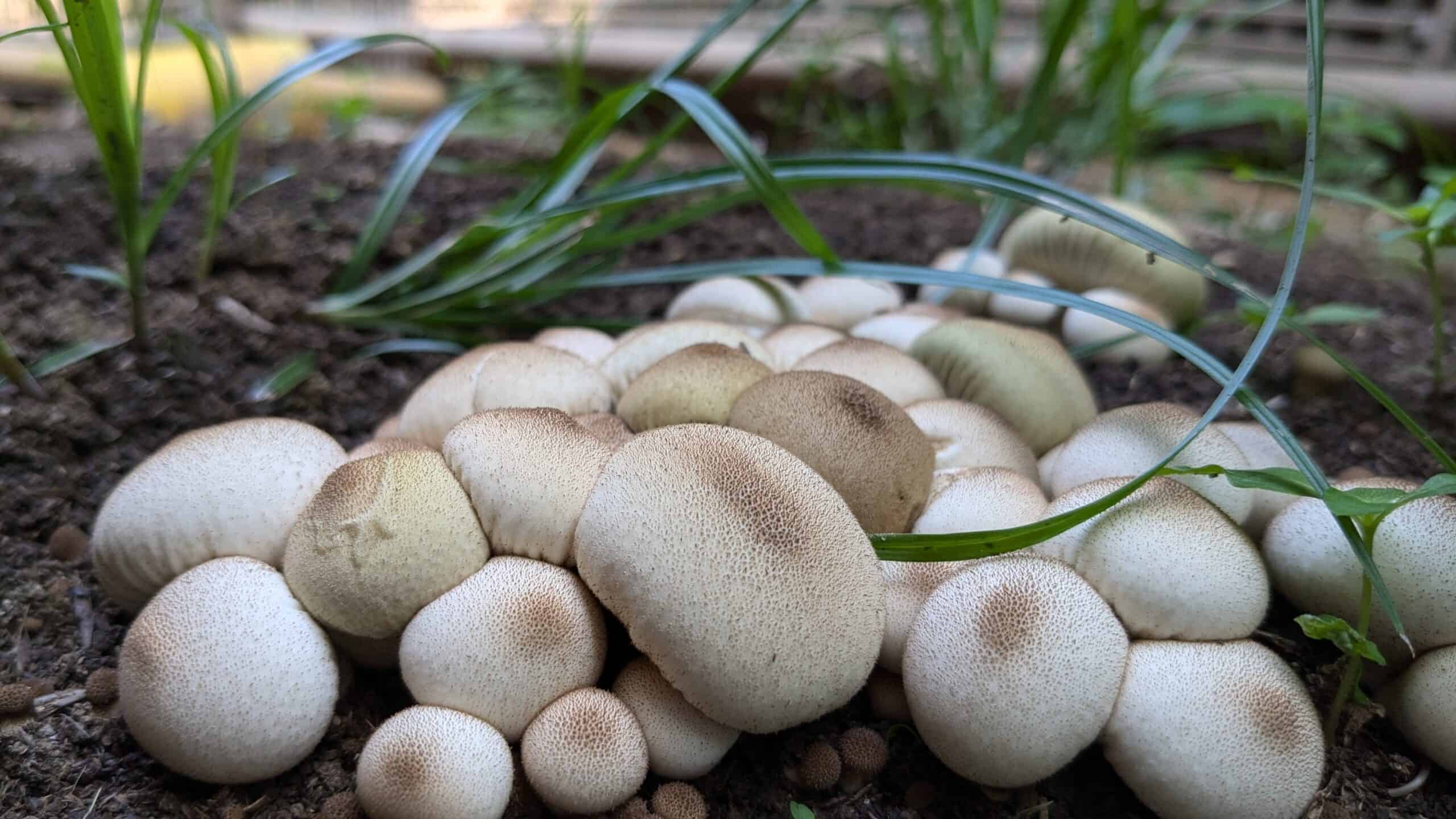
Lycoperdon pyriforme, or the Pear-Shaped Puffball, is a common but fascinating fungus known for its distinctive pear-shaped fruiting body. When mature, these puffballs release a cloud of spores when disturbed, creating a dramatic display. Found on decaying wood in forests across the world, this fungus is notable for its smooth to slightly rough surface and its ability to grow in large clusters. The intriguing spore dispersal mechanism and unique shape make the Pear-Shaped Puffball a favorite among mushroom enthusiasts.
Schizophyllum commune (Split Gill)
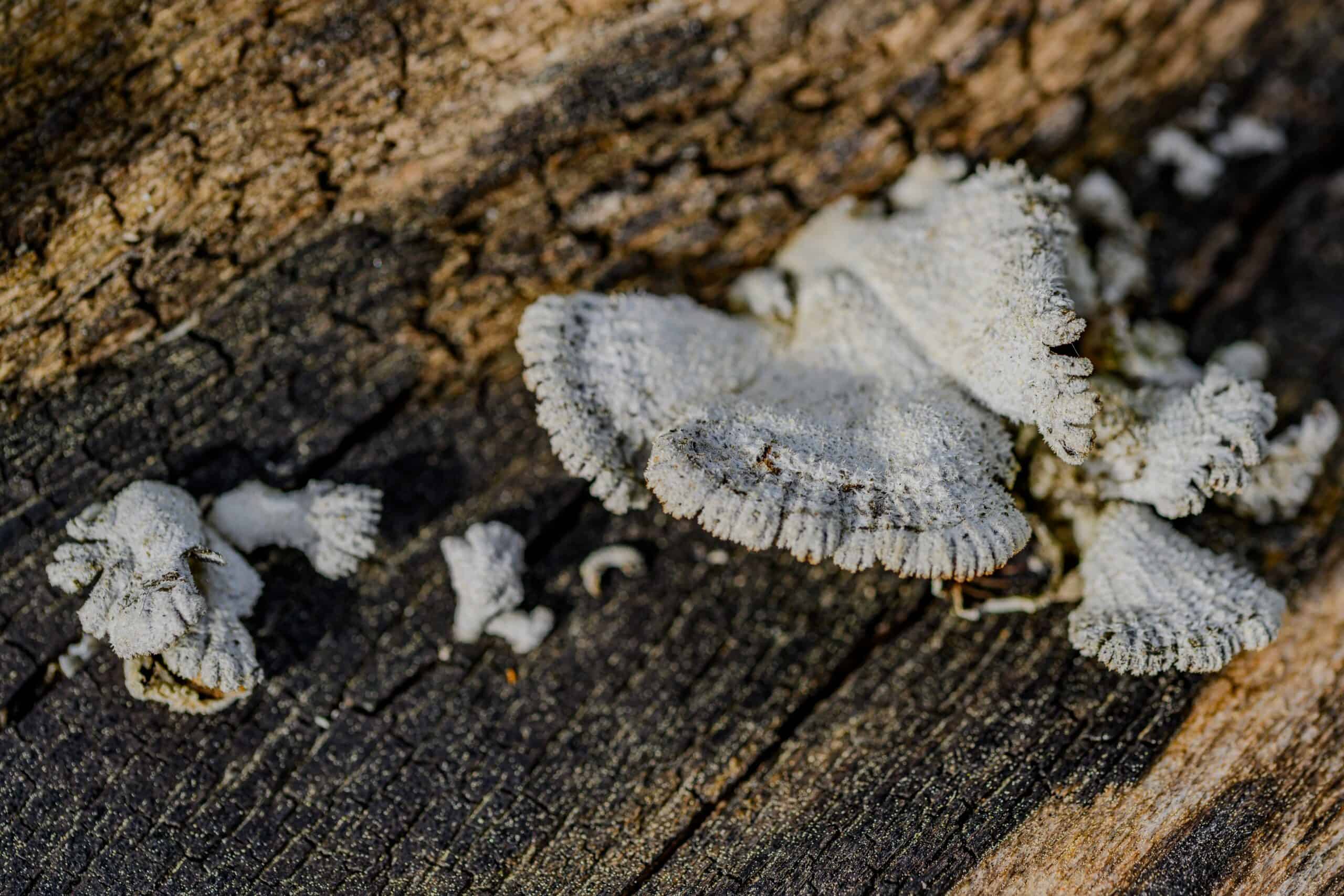
Schizophyllum commune, known as the Split Gill, is a unique fungus with gills that split lengthwise, giving it a distinctive appearance. This fungus is incredibly widespread, found on decaying wood in a variety of environments around the world. The gills’ ability to split and curl under varying humidity conditions helps in spore dispersal. Its ubiquitous presence and fascinating morphology make the Split Gill an interesting species for study and observation.
This article originally appeared on Rarest.org.
More from Rarest.org
8 Uncommon Species of Wolves
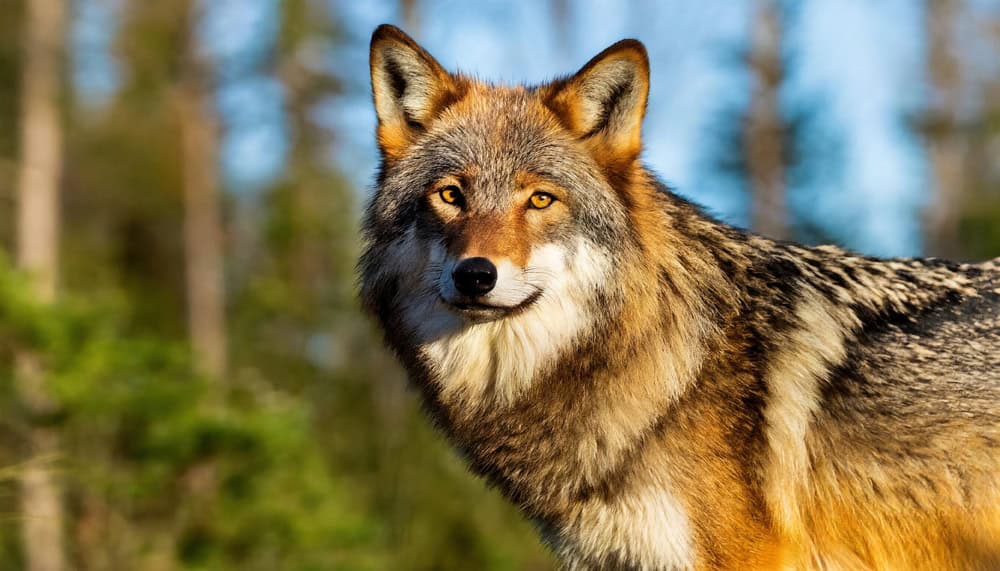
Wolves are among the most fascinating and diverse animals in the wild, with various species and subspecies adapted to different environments across the globe. While many people are familiar with the iconic gray wolf, there are several lesser-known species that are equally intriguing and unique. Read more.
19 Rare and Mysterious Deep-Sea Creatures
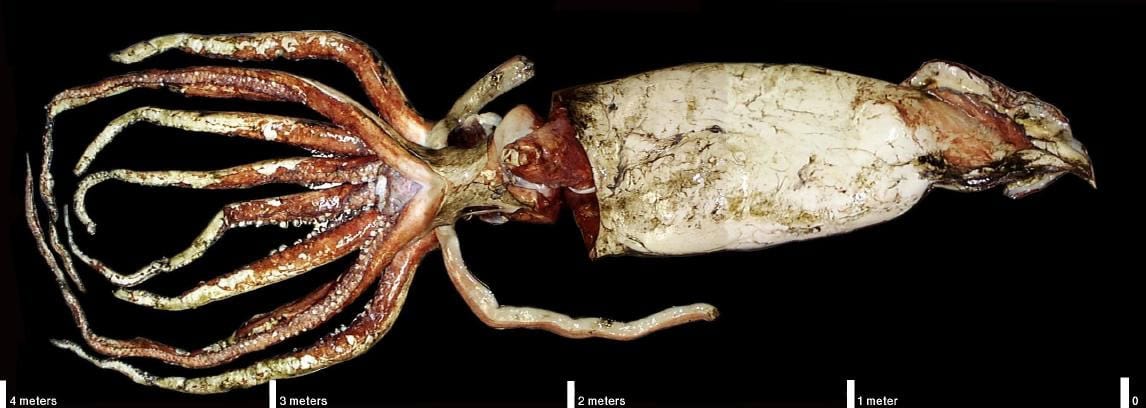
Discovering the rare and unusual antelope species of the world is a journey into the unique diversity of wildlife. These antelopes are not just rare but possess unique characteristics that set them apart. Read more.
Top 15 Designer Clothing Brands Worldwide

Designer clothing brands have become icons of style and luxury. These brands offer more than just apparel; they represent heritage, innovation, and timeless elegance. Read more.
